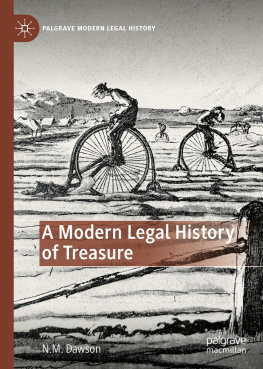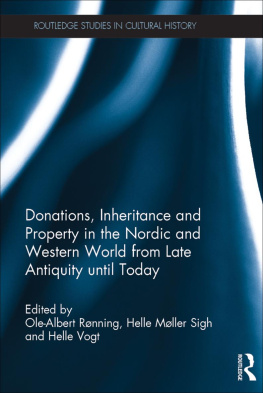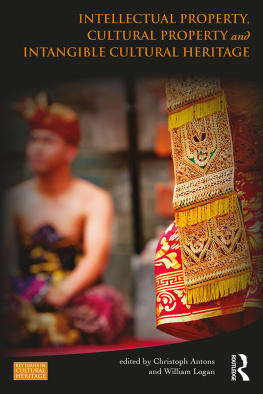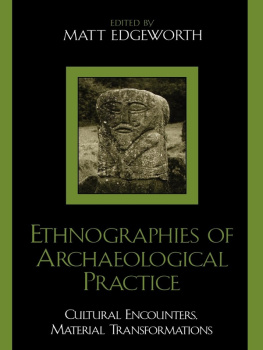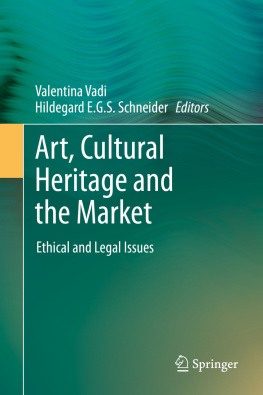CULTURAL PROPERTY ACQUISITIONS
TECHNIQUES AND ISSUES IN CULTURAL RESOURCES
MANAGEMENT
Series Editor: Caryn M. Berg
This series is designed to provide practical guidance to the day-to-day practice of cultural resources management through a series of brief guides. Guides are directed at the professional in this field, students in heritage management programs and field schools, and the consumers of CRM work. Manuscripts, proposals, and letters of inquiry should be directed to the series editor at archaeology@lcoastpress.com
Negotiation Basics for Cultural resource Managers, Nicholas Dorochoff
Avoiding Archaeological Disasters: A risk Management Approach, Darby Stapp and Julia Longenecker
Cultural Property Acquisitions: Navigating the Shifting Landscape, Aime L. Taberner
First published 2012 by Left Coast Press, Inc.
Published 2016 by Routledge
2 Park Square, Milton Park, Abingdon, Oxon OX14 4RN
711 Third Avenue, New York, NY 10017, USA
Routledge is an imprint of the Taylor & Francis Group, an informa business
Copyright 2012 Taylor & Francis
All rights reserved. No part of this book may be reprinted or reproduced or utilised in any form or by any electronic, mechanical, or other means, now known or hereafter invented, including photocopying and recording, or in any information storage or retrieval system, without permission in writing from the publishers.
Notice:
Product or corporate names may be trademarks or registered trademarks, and are used only for identification and explanation without intent to infringe.
Library of Congress Cataloging-in-Publication Data:
Taberner, Aime L.
Cultural property acquisitions : navigating the shifting landscape / Aime L. Taberner.
p. cm. (Techniques and issues in cultural resources management) Includes bibliographical references and index.
ISBN 978-1-61132-109-8 (hardcover : alk. paper) ISBN 978-161132-110-4 (pbk. : alk. paper) ISBN 978-1-61132-111-1 (ebook) 1. MuseumsLaw and legislationUnited states. 2. Cultural propertyProtectionLaw and legislationUnited states. 3. MuseumsAcquisitionsGovernment policyUnited states. I. Title.
KF4305.T33 2011
344.73093dc23
2011025112
ISBN 978-1-61132-109-8 hardcover
ISBN 978-1-61132-110-4 paperback
M useum staffwhether new to the field or working with collections for decadesare often overwhelmed by the complexities of acquiring cultural property, particularly antiquities and archaeological material. As an intern at the Harvard Peabody Museum of Archaeology and Ethnology (PMAE), I was surprised to encounter a degree of uncertainty about this, despite the museums strong track record of ethical collecting and rigorous acquisition policies regarding antiquities. This uncertainty was due in part to the differing perceptions of legal and ethical collecting. The responses to a survey received from over thirty museums worldwide revealed this varied understanding of what constitutes permissible and moral acquisition was not limited to Harvard. Policies and procedures diverged widely, as did knowledge of and adherence to the legal parameters restricting acquisitions.
This book began as an attempt to operationalize and neutralize Harvard PMAEs approach to acquisitions by providing an overview of applicable law, an agreed-on glossary of terms to facilitate discussion, and procedural recommendations for acquisition review based on industry-accepted best practices. This research continued as my graduate thesis under the direction of faculty at Harvard Law, ensuring that the information and recommendations were based on a solid understanding of common law principles governing property as well as the various foreign and domestic legal means specifically intended to control or otherwise applied to the distribution of cultural property.
My goal has been to provide an unbiased and practical resource for those tasked with navigating the complicated and rapidly changing legal and ethical landscape governing the acquisition of cultural property and archaeological materiala complicated undertaking that entails a significant degree of risk. I hope that this publication contributes to increased stewardship of our worlds cultural heritage and protects museums and those working with cultural property.
ACKNOWLEDGMENTS
This publication would not have been possible without the intellectual contribution and personal support of Dr. Genevieve Fisher, registrar of PMAE, who gave generously of her time and insight. I also thank Dr. Patricia Capone, associate curator at PMAE, who, with Dr. Fisher, oversaw the initial development of this research. I am grateful for their enthusiasm and collaboration and for the confidence they placed in me.
My internship at PMAE involved the review of collections policies and procedures of dozens of museums from around the world. I am grateful to those museum professionals who responded to my acquisition questionnaire and voiced support for my research topic. I hope that this resource is of assistance to them and to future generations of museum professionals.
It is impossible to mention all resources that were critical to the development of this publication, but three documents stand out as exemplary. These include two publications originating from the United Kingdom, Combating Illicit Trade: Due Diligence Guidelines for Museums, Libraries and Archives on Collecting and Borrowing Cultural Material
I am indebted to Professor Harry S. Martin III (Terry) of the Harvard Law School who generously gave of his time, resources, and knowledge to inform and guide my legal analyses and procedural recommendations during the development of this research for my thesis and who continues to patiently address my questions. Professor Martins guidance in translating the relevance of legislation and case law to museum practice was invaluable.
In addition, I wish to thank Left Coast Press for publishing this book. The patience and support demonstrated by Mitch Allen, publisher, Caryn Berg, series editor, Carole Bernard, editor, and others is greatly appreciated.
Finally, I am grateful for the many friends and colleagues who aided in the development of this publication, particularly Paul Taberner, Ginna Johnson, Joan Zofnass, David Taberner, Carrie Pinsker, and Sarah Burks. Lastly, this publication would not have been possible without the support and encouragement of my husband, Patrick Guthrie.


